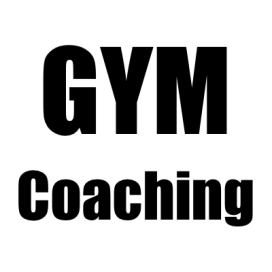Shane Womack, Director of Marketing for Inside Cheerleading magazine, responded to the msnbc article by Melissa Dahl, Health writer, titled:
Flying without a net: Cheer injuries on rise
Activity more dangerous than any other sport for young girls
Shane Womack:
I have to strongly disagree with this article. Unfortunately she has gotten some wrong information…
Therefore, here are some of the points that didn’t make it into the article.
The role of cheerleading:
The first is the issue of the role of cheerleaders and stunting. Most school cheer coaches recognize that their primary role is to lead the crowd at athletic contests. They can better fulfill this by doing basic “game stunts” like the thigh stands, elevators, extensions and yes – even some basket tosses. The game is going on behind the cheerleaders and the crowd is seated in high-rise bleachers. Stunts get the attention of the crowd, so that you can draw their focus to the cheer team in order to better lead them. Signs are more effective when they can be seen and partner stunts can accomplish this. In addition, the skills the cheerleaders do can build a rapport with the crowd and help them be a conduit between the crowd in the stands and the athletes on the field. As we teach, it is important to recognize that there are times for “game stunts” and that the more intricate type of skills that help attract great athletes are better reserved for entertainment-style routines at halftime or for competition.
Risk Assessment:
While there are difficulties in doing some risk assessments due to participation figures, there are in fact places where we can do risk assessments, particularly in high school cheerleading. The data from the National Center for Catastrophic Sports Injuries Annual Report shows that in 2007-2008 there were 3 high school catastrophic injuries and approximately 400,000 cheerleaders. That puts the risk of catastrophic injury per 100,000 participants at .75 but as the article does mention, that doesn’t account for the fact that cheerleaders participate all year. That means that the number of injuries for cheerleading took multiple seasons to accrue and to “normalize” the data to compare it to other sports you would have to half the risk level. That puts cheerleading at around .375 catastrophic injuries per 100,000. In simplest terms comparing it to other high school sports, that means there are 10 sports that have a higher risk of catastrophic injury than cheerleading – including 3 girls sports – ice hockey, gymnastics and soccer.
And this bears out our own experience. While articles are quick to point out common sports injuries like ankle sprains or the occasional knee brace, they have a hard time finding a program where they can point to a pattern of more serious injuries than other sports such as soccer, baseball, track, etc.
Decrease in Injuries:
Perhaps the most unfortunate part of the entire article however is that it ended with the idea that recent improvements in cheer injury statistics are due to coaches somehow “hiding” injuries. This improvement can more likely be attributed to a concrete set of circumstances than to an unsubstantiated comment.
In 2006, the NCAA working with AACCA required that all of their college cheer programs would have to be supervised by a safety certified coach in order to retain their catastrophic insurance coverage. In addition, the AACCA required that our safety rules had to be followed by these programs or their certification could be revoked. It is important to note that prior to this requirement, cheerleading made up 25% of their catastrophic claims. Since this requirement, there have been no cheerleading catastrophic injury claims with the NCAA.
Since 2004, 12 state high school associations have required their cheerleading coaches to complete the AACCA Safety Course.
In 2006, the AACCA removed basket tosses from the basketball court surface for colleges and high schools and further restricted colleges from performing 2 1/2 high pyramids on the basketball court. Further rules restrictions regarding surfaces have been implemented by both the AACCA and the National Federation of High Schools since then.
In 2004, the United States All Star Federation (USASF) was formed to provide a framework to support non-school cheerleading known as “All-Star”. They have a skill-based leveling system for rules and a credentialing program for coaches and gyms.
These efforts on the part of the NCAA, the National Federation of High Schools, the US All Star Federation and the AACCA are much more likely the reason for increased safety than the idea that cheer coaches have started hiding injuries, and it is unfair to all of the great coaches that work tirelessly to provide a safe environment for their teams.
We do commend the Journal for pointing out that the risk of cheerleading is actually closer to that of soccer than of football which has the vast majority of high school and college catastrophic injuries. However, when the true successes that have been achieved aren’t reported, it is hard to continue those successes and help them spread to other states and organizations.
Why this information was left off I can only speculate. My conversations with the reporter where very good and her questions showed a genuine interest in digging down to the real facts. There were quite a few cheer issues addressed in a short space and the article included some cheerleading history as well. Perhaps there just wasn’t room to get it all in, and unfortunately this was the part that was not included. There are many factors that go into what makes it into an article.
Regardless of the reasons, these are important safety improvements and we hope the record can be corrected.
What do you think? Are you going to be the one to go tell this athlete her sport is too dangerous?
Leave a comment.

